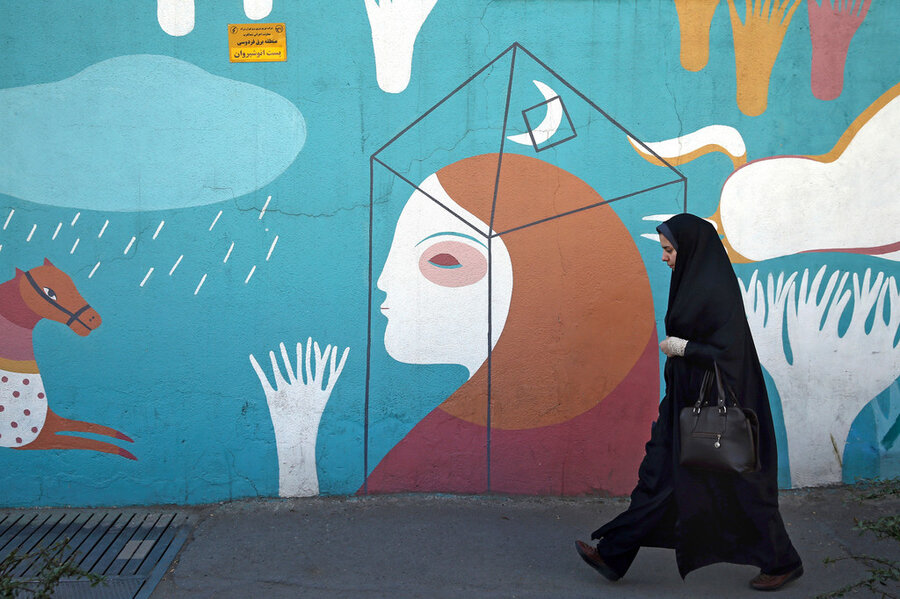A veiled truth in Iran and the US
Loading...
For all their official hostility toward each other, Iran and the United States now have at least one thing in common. Each is home to a campaign by Muslim women demanding the freedom to wear the clothes of their choice.
In Iran, the campaign started in December when dozens of young women began to stand up in public squares and hold their headscarves aloft in defiance of mandatory laws on wearing a hijab. Social media in Iran have been ablaze with images of the protesters. At least 29 of them have been arrested so far and could face two months in jail and 74 lashes.
Their core message: Telling women what to wear on their heads is like telling them what to think in their heads.
In the US, the campaign is not against government rules but rather a common social stigma applied to Muslim women who wear a veil in public out of religious ideals about personal modesty.
Since 2013, a movement begun by Muslim immigrant Nazma Khan has invited all women to wear the hijab on Feb. 1in solidarity with Muslim women. The so-called World Hijab Day has since taken off in popularity in many countries, even prompting British Prime Minister Theresa May to declare last year, “I believe that what a woman wears is a woman’s choice.”
The campaign’s core message: Religious freedom requires an understanding of how religious attire can define a person’s identity. Harassing women for an expression of their beliefs can erode the freedom of religion.
The mirror aspects of the two campaigns reflect a common interest in individual integrity and freedoms – and not only for women. In Iran, men are barred from wearing shorts in public. While the US-based campaign appears to be slowly shifting attitudes, the one in Iran appears to be sparking a political battle among the regime’s political and religious elite.
Soon after the women’s protests began, President Hassan Rouhani – a relative moderate – released an opinion survey showing a big drop among those who favor charging women caught without a hijab in public. In 2006, about half of Iranians said they should be punished. By 2014, the number had declined to 39 percent – and has probably fallen since then, given the level of dissent in Iran. In the capital, Tehran, enforcement of the hijab law has been has eased since December.
In societies with concerns about security, of course, laws that require temporary removal of a facial covering – in the presence of a woman – may be needed. But otherwise veils of all kinds do not pose a threat in most settings, nor should they be required by law or imposed on women through public shaming.
Honoring a person’s choice on whether to wear religious attire is to honor their inherent dignity, a concept common to all religions. Iran and the US are each still coming to grips with that common truth.







